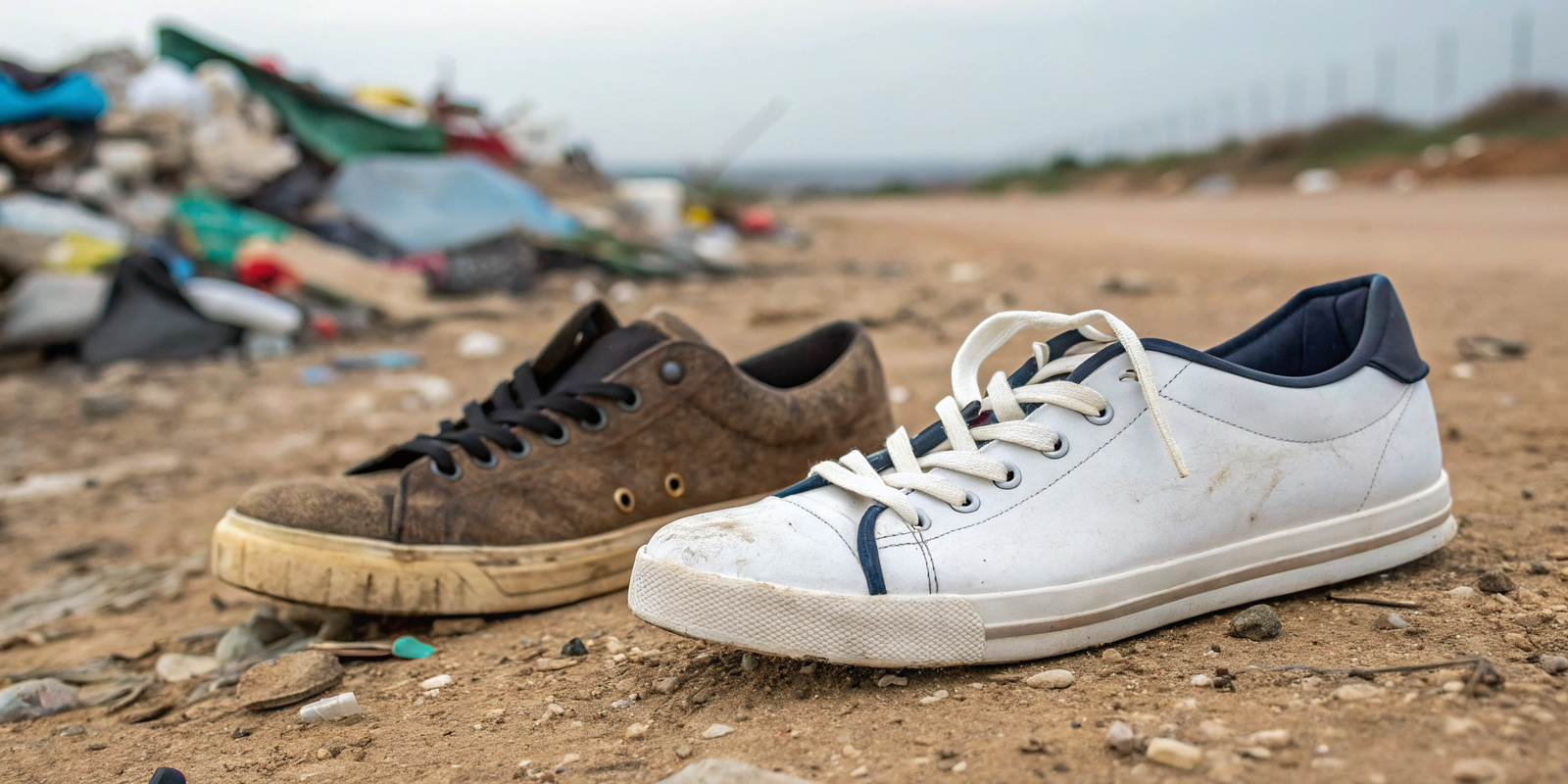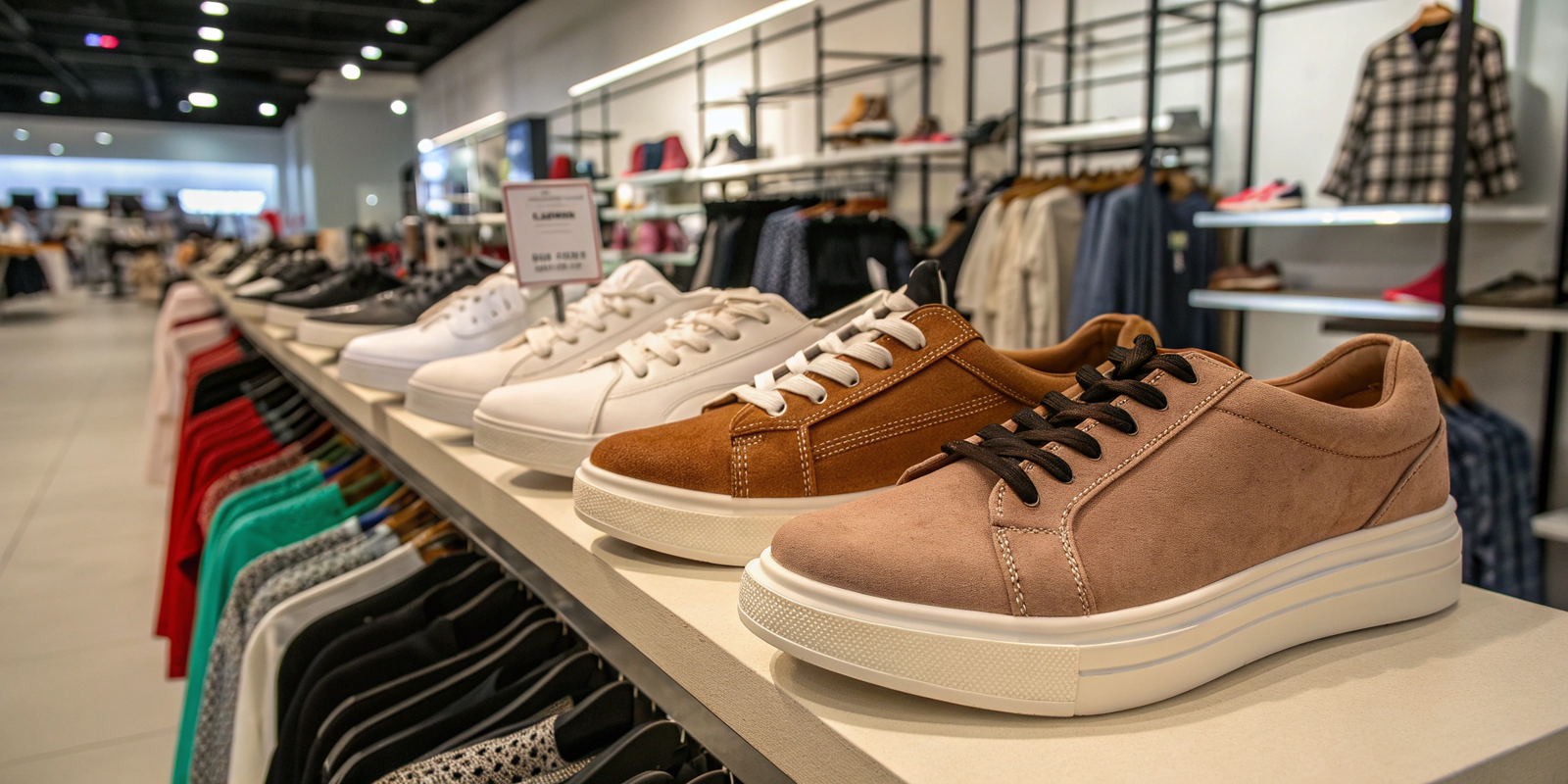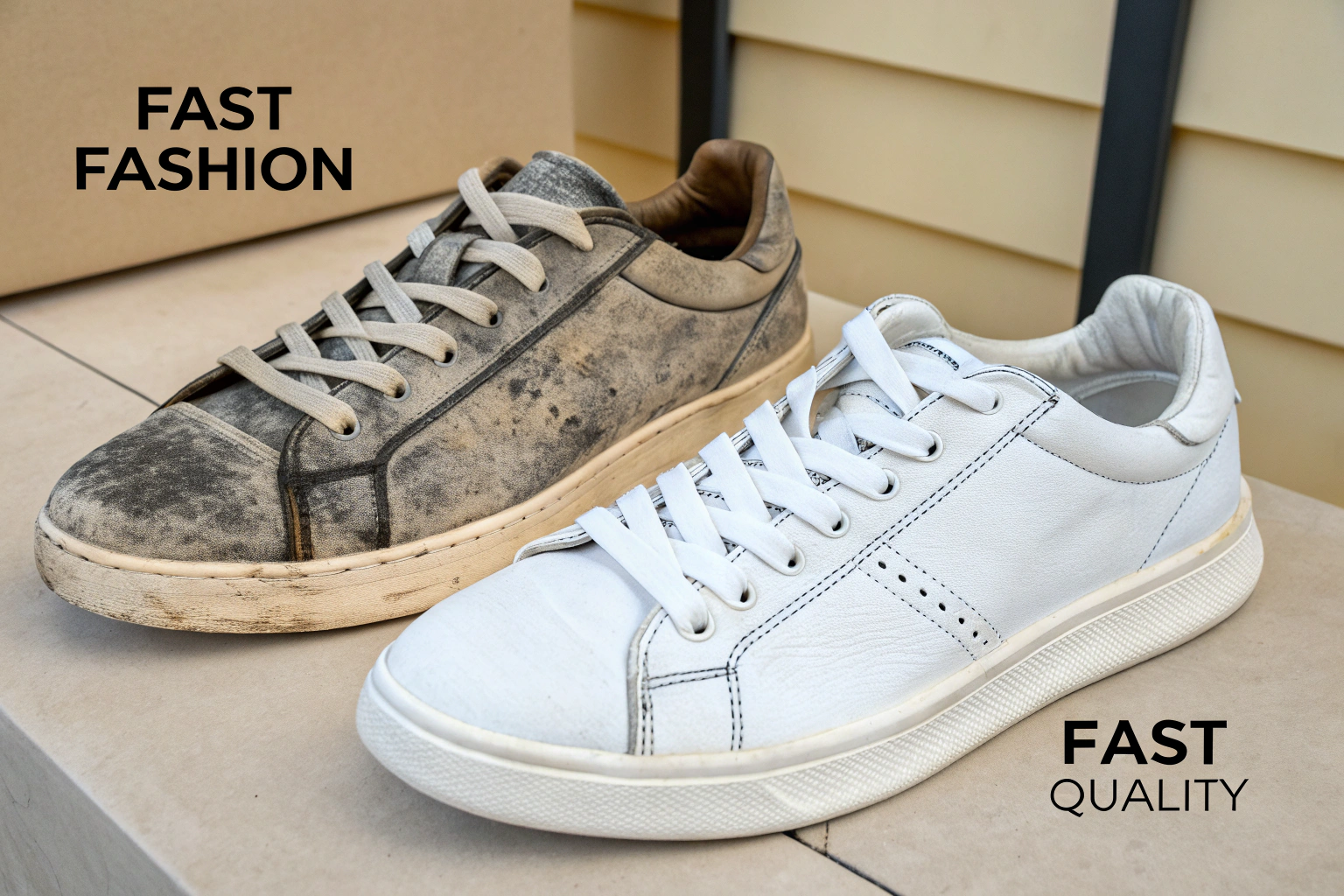Problem: Ever wondered why those trendy shoes are so cheap? Agitation: They might look great, but the true cost isn't on the price tag. Solution: Let's uncover the hidden price you're really paying.
Fast fashion shoes are often cheap because they prioritize speed and low production costs over durability, ethical practices, and environmental considerations. This model uses synthetic materials and rapid manufacturing, leading to a higher hidden cost for both consumers and the planet.

As someone who has spent over two decades in the footwear industry, I've seen firsthand how the push for cheaper products impacts everything from material choices to labor practices. It's a complex web, but understanding it is key to making better choices.
Why Are Fast Fashion Shoes So Cheap? Problem: You see a pair of shoes that are incredibly affordable, and it's tempting. Agitation: But how can they be so inexpensive without cutting corners somewhere? Solution: Let's break down the factors that drive these low prices.
Fast fashion shoes are incredibly cheap due to a strategic combination of low-cost materials, mass production, and often, less ethical labor practices. This model prioritizes trendy designs ready for market in weeks, rather than months, ensuring a constant flow of new products at unbeatable prices.

When we look at the core reasons behind the low price of fast fashion shoes, several elements come into play. From my experience managing supply chains and factory relationships, I can tell you that every penny saved in production contributes to that final low price you see on the shelf. It's a calculated effort to maximize output while minimizing input costs.
What materials are used to keep costs down?
Fast fashion shoes often use synthetic, petroleum-based materials. These are cheap to produce. They include:
- Polyester: Used for uppers and linings. It is very common.
- Polyurethane (PU): This is a type of synthetic leather. It looks like real leather but costs much less.
- EVA (Ethylene-vinyl acetate): This is a foam. It is used for midsoles and outsoles. It is light and cheap.
These materials are not durable. They also have a large environmental footprint. They are hard to recycle. They break down slowly.
| Material Type | Cost Implication | Environmental Impact | Durability |
|---|---|---|---|
| Synthetic Leathers (PU, PVC) | Very low cost, mass produced | High carbon footprint, not biodegradable | Low, prone to cracking and peeling |
| Polyester Fabrics | Low cost, easily dyed | Microplastic shedding, energy-intensive production | Medium, can pill and stretch over time |
| Cheap Foams (EVA) | Very low cost, lightweight | Not recyclable, persists in landfills | Low, offers poor support over time |
| Low-Quality Rubber | Low cost, easy to process | Non-biodegradable, often contains fillers | Low, wears down quickly, poor grip |
How does mass production affect price?
Fast fashion companies produce items in huge volumes. This reduces the cost per unit. Factories run continuously. They use assembly line methods. This makes production very efficient. This scale allows them to get cheaper prices on materials. It also helps them get better deals on shipping. This high volume also pushes for faster production cycles. This means less time for quality checks.
What are the labor cost factors?
Labor costs are a big part of the price. Fast fashion often uses factories in countries with lower wages. This helps keep prices down. My company, Lucas, works with BSCI and SEDEX-certified factories. We believe in ethical labor. But not all companies do this. Some outsource to places with poor labor laws. This can lead to:
- Low wages: Workers are paid very little.
- Long hours: Employees work for many hours.
- Poor conditions: Workplaces may be unsafe.
These practices reduce production costs. But they come with a high human cost. We believe in fair treatment. We know it adds to the cost. But it is the right way to do business.
Do Fast Fashion Shoes Last as Long as Branded Shoes? Problem: You buy a pair of cheap, trendy shoes, excited about the style. Agitation: But within weeks or months, they start to fall apart. Solution: Let's compare their lifespan to that of higher-quality footwear.
No, fast fashion shoes typically do not last as long as branded, higher-quality shoes. They are designed for short-term wear, focusing on immediate trends rather than durability, which means they break down quickly and need frequent replacement, leading to more waste.

When customers ask me if a cheaper shoe will last as long as a premium one, my answer is always the same: "You get what you pay for." This isn't just about the price tag. It's about the entire philosophy behind the shoe's creation. At Lucas, we prioritize quality and longevity, even if it means a slightly higher upfront cost. Fast fashion, however, operates on a very different principle.
What materials impact durability?
The materials used in fast fashion shoes are not chosen for longevity. They are chosen for cost. This means they degrade quickly.
- Uppers: Synthetic leather often cracks. Fabric uppers can stretch out or tear easily.
- Soles: Cheap EVA foam midsoles compact over time. This offers less cushion. Rubber outsoles wear down fast. They lose grip quickly.
- Adhesives: Poor glues are used. They fail under stress. This causes soles to detach.
| Component | Fast Fashion Longevity | Branded Shoe Longevity | Why the Difference? |
|---|---|---|---|
| Upper | 3-6 months (cracking, tearing) | 1-3+ years (with care) | Quality of synthetic vs. natural leather, stitching strength |
| Sole | 2-4 months (wear, compression) | 1-2+ years (even wear, lasting support) | Density and composition of EVA/rubber, advanced sole technologies |
| Adhesives | Weeks-months (seam separation) | 1-3+ years (strong, durable bonds) | Type and application process of glues, often reinforced with stitching |
| Stitching | Weak, unravels easily | Strong, reinforced | Quality of thread, stitch density, construction methods |
How does construction affect lifespan?
Fast fashion shoes use simple construction methods. These are quick but not strong. Common methods include:
- Cemented construction: The upper is glued to the sole. This is fast. But the glue can weaken over time.
- Minimal stitching: Key stress points may not be stitched. This means they rely more on glue.
In contrast, quality shoes often use more complex methods. These include Goodyear welting or Blake stitching. These methods secure the upper to the sole with strong seams. They make shoes much more durable. They also often allow for resoling. This extends the shoe's life.
What about design and testing?
Fast fashion shoes have limited design and testing. They are made quickly to follow trends. This means:
- Less testing: They are not tested much for wear. They are not checked for comfort over time.
- Poor support: They offer less arch support. They have little cushioning. This leads to foot problems later.
- Quick obsolescence: They are made to be replaced soon. New trends come fast. So, people buy new shoes. This creates a cycle of constant buying and discarding. The immediate appeal of fast fashion shoes is clear: they are trendy and cheap. But the true costs, often hidden, include environmental damage, unethical labor practices, and reduced product longevity.
